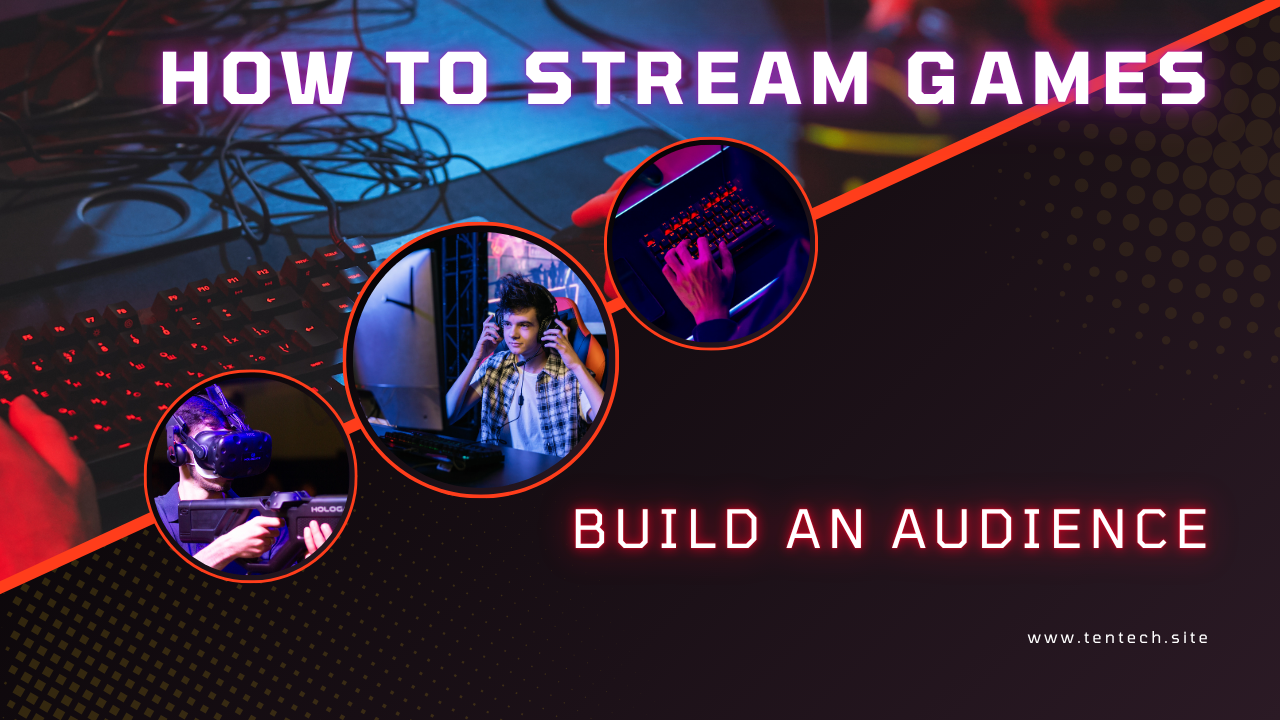How to Start and Grow as a Game Streamer: A Step-by-Step Guide
Streaming video games has gone from a fun thing to do to a big business. Twitch, YouTube Gaming, and Kick are just a few of the platforms that have let gamers share their gaming with the world, make friends, and even make money. But every successful streamer has a good plan, works hard all the time, and knows what their fans want.
This tutorial will show you the most important actions to take if you love gaming and want to start streaming and get more people to watch.
1. Pick the Right Platform
The first thing you need to decide is where to stream. There are pros and cons to each platform: The most common place to watch live games is on the streaming platform Twit. It has the most viewers and a built-in gaming community. YouTube Gaming is great for creators who wish to upload edited videos, lessons, or VODs. Kick is a new streaming service with a big community and large revenue splits. Pick the platform that fits your goals and the way you write. Twitch and YouTube are frequently the best places for new users to start.
2. Get your streaming equipment ready
You don’t need a professional studio to get started, but having good equipment makes the experience better for viewers. You will need the following: PC or Console: A gaming PC with at least 16GB of RAM and a good GPU is best. You may also stream directly to consoles like the PS5 and Xbox. You need a card with capture capabilities like Elgato to send a signal from a gaming system to a PC. OBS Studio and Streamlabs are two free and popular programs for setting up your stream’s layout, audio, and video. Camera and Mic: A crisp, noise-cancelling microphone and a webcam (1080p is best) make your stream more human and increase the sound quality. Check that your connection to the internet is secure; speed for uploads is more crucial than downloading speeds. Set a goal of at least 5 Mbps for upload speed.
Create a brand for your stream
Your stream should show who you are and how you like to play games. To be different: Give your channel a name that is simple to recall and sticks out. Make sure your logo, overlays, and banners all have the same look. Write an interesting bio or “About” section that tells people what games you play and when you broadcast. Branding makes it easy for new viewers to figure out what your channel is about and if they want to follow it.
Talk to Your Audience
The main difference between a YouTube video and a live stream is that you may interact with them. People don’t only come to see the game; they come to see you. Things to do to get others involved: Talk to each other often, even if no one else is looking. Answer chat messages right away. Ask your viewers questions, hold polls, and scream out new followers. Use alerts and widgets on the screen to celebrate involvement, like following, subscriptions, and donations.
Making the room welcoming and collaborative is what turns casual viewers into loyal fans.
Create a strategy and stay to it
To do well with streaming, you have to turn up often. Your stream should be like a TV show, and people should know when to watch it.
Plan to broadcast around your life .For example, stream three times a week for two hours each time. Keep your time slots and let people know about your schedule on social media and your streaming profile. Use countdown tools and notifications to let your audience know when you’re going to go live. Being consistent helps you and your audience create habits.
Get the world out about your stream outside of the platform.
You can’t just stream; you have to get people to your channel to develop your audience. Use sites like: Twitter/X: Share video, news, and comments to get people in the gaming community involved. TikTok: Short, hilarious, or highlight videos can go popular in no time. Instagram: Posts about your life or behind-the-scenes content let people connect with you. Discord: Create a private space for fans to talk, share memes, and get notifications about streams. Being involved in other communities, like Reddit and game-specific forums, might help bring in visitors.
Learn, get better, and change
Streaming is like a trip. Write down what’s effective and what fails: Keep an eye on your stream analytics, like the number of viewers, how long they watched, and how much they chatted. Watch your own replays to see what you can do better. Look at other streamers in your genre who are doing well—what makes people want to watch them again? Keep up with changes to games, streaming tools, and platforms. Getting up with current trends makes your content fresh and productive.
Final thoughts: From Player to Person
Streaming isn’t only about playing games; it’s also about sharing your interests, making friends, and making fun content. If you have the perfect balance of personality, consistency, and technical know-how, you can go from being a casual streamer to a respected content provider. It takes time to be successful, but every stream is a step in the right direction. Be yourself, keep becoming better, and most importantly, have fun with the game. People will follow your enthusiasm.

